Wrought Steel vs Cast Steel
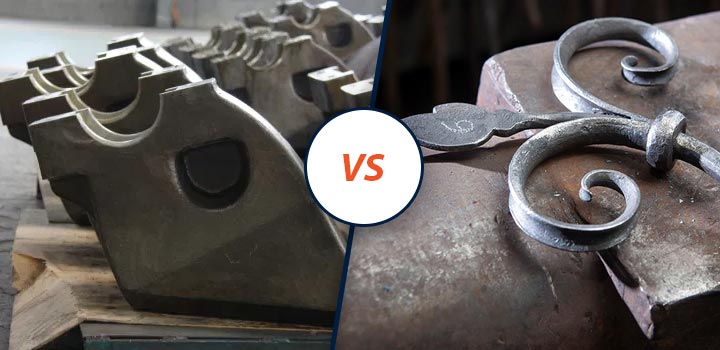
Wrought steel and cast steel are often confused by consumers and manufacturers, as both are types of iron-based materials. However, they are fundamentally different in terms of composition, properties, and applications.
Wrought steel is typically produced by heating the metal and then shaping it using mechanical processes such as rolling or forging. On the other hand, cast steel is created by melting the metal and pouring it into a mold where it solidifies. The name itself indicates the method of production: "wrought" refers to the working process, while "cast" relates to the molding technique.
Wrought steel is known for its high ductility and malleability, making it ideal for applications that require bending or shaping without breaking. It has lower carbon content compared to cast iron, which makes it more workable and easier to weld. This type of steel also offers excellent strength when formed, making it suitable for structural and mechanical uses. Key benefits include:
- Excellent welding properties, allowing for versatile shaping according to specific needs.
- High flexibility and ductility, ideal for products requiring resilience.
- Strong tensile strength, suitable for harsh environments.
- Easy to forge, enabling the creation of complex shapes with ease.
Cast steel, on the other hand, contains a higher percentage of carbon (typically 2.0–4.0%) and is often used in industrial and construction settings. It is created by melting iron ore and blending it with other metals and alloys before being poured into molds. Due to its high carbon content, cast steel is harder and more brittle than wrought steel, but it still offers good strength and durability. Some advantages include:
- High compressive strength, providing resistance to pressure.
- Good durability and toughness, especially when alloyed or heat-treated.
- Excellent machinability, making it easy to cut, drill, and shape.
- Good wear resistance, particularly when enhanced with elements like chromium or molybdenum.
Table of contents
- Difference between wrought steel and cast steel
- Heat Treatment of cast steel
- Advantages and Disadvantages of cast iron steel
- Advantages of wrought iron
- Puddling process vs Metal Casting process
- Types of cast iron
- Properties of 4140 cast steel
- Chemical composition of Cast iron
- Cast Iron mechanical properties
- AISI 4140 Heat Treatment
- Wrought Iron chemical composition
- Wrought Steel mechanical properties
- Inspection and Testing of Cast steel
- Manufacturing process of 4340 steel casting
- Cast steel valves temperature range
- Difference between Wrought Iron and Steel
- Surface finish of Cast iron parts
Difference between wrought steel and cast steel
| Wrought Iron | Cast Iron |
|---|---|
| It is iron that has been heated and then worked with tools. | It is iron that has been melted, poured into a mold, and allowed to solidify. |
| It is brittle | It is ductile |
| Higher tensile strength | Lower tensile strength compared to Wrought Iron |
| Low melting point | High melting point |
| It is difficult to weld | It is easily welded |
Right technique for welding cast steel, check 4140/ 4340 Steel Heat Treatment and Casting hardness
Heat Treatment of cast steel
- Annealing
- Precipitation Strengthening
- Tempering
- Case Hardening
- Normalising
- Quenching
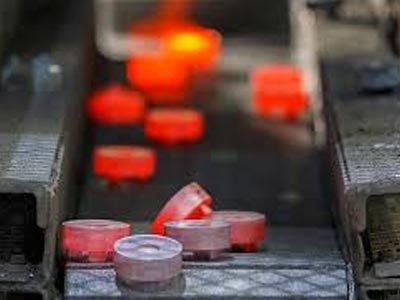
Refer advantages of Cast and Wrought Steel products
Advantages and Disadvantages of cast iron steel
Advantages
- Cast iron has excellent fluidity after melting
- High Wear Resistance
- Excellent Machinability
- Compression Strength
- Low Cost
Disadvantages
- It is relatively brittle and may fracture
- Very easily get rusted
- It is relatively heavy
Advantages of wrought iron
- Increased ductility
- Excellent weldability
- Easily forged
- High tensile & compressive strength
- Enhanced malleability
Check difference between puddling of cast iron and Metal Casting process
Puddling process vs Metal Casting process
The puddling process involves converting pig iron into wrought iron by heating and stirring it in a furnace without using charcoal. This was one of the earliest methods for producing wrought iron in large quantities.
In contrast, the metal casting process involves melting metal and pouring it into a mold to form the desired shape. The metal flows through a channel called a sprue, and once cooled, the final product is removed. This method is commonly used for creating complex shapes that would be difficult or expensive to make otherwise.
Types of cast iron
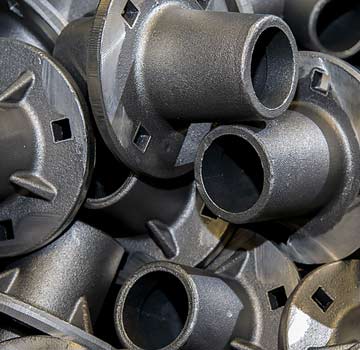
Gray Cast Iron
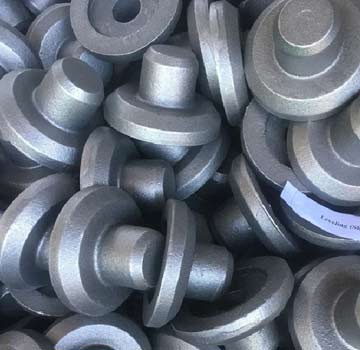
Ductile Cast Iron
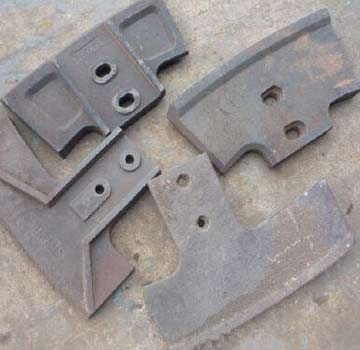
White Cast Iron
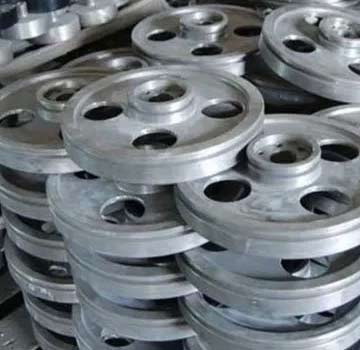
Malleable Cast Iron
Properties of 4140 cast steel
- Hardness
- Ductility
- Wear resistance
- Corrosion resistance
- Toughness
- Strength
- Machinability
- Weldability
- Low-temperature properties
- High-temperature properties
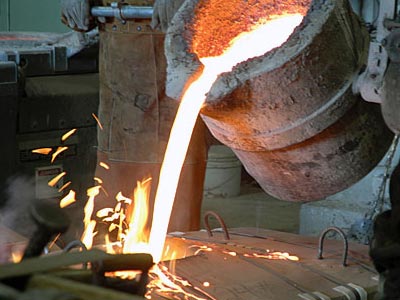
Types of Cast Steel material, check grades, composition, and density in kg/m3
Chemical composition of Cast iron
| ASTM | Chemical Requirements | ||||
|---|---|---|---|---|---|
| STEEL GRADE | Carbon | Manganese | Silicon | Sulfur | Phosphorus |
| Max % / Range | |||||
| ASTM A27 / A27M | |||||
| Grade N-1 | 0.25 | 0.75 | 0.80 | 0.06 | 0.05 |
| Grade N-2 | 0.35 | 0.60 | 0.80 | 0.06 | 0.05 |
| Grade U60-30 | 0.25 | 0.75 | 0.80 | 0.06 | 0.05 |
| Grade 60-30 | 0.30 | 0.60 | 0.80 | 0.06 | 0.05 |
| Grade 65-35 | 0.30 | 0.70 | 0.80 | 0.06 | 0.05 |
| Grade 70-36 | 0.35 | 0.70 | 0.80 | 0.06 | 0.05 |
| Grade 70-40 | 0.25 | 1.20 | 0.80 | 0.06 | 0.05 |
| ASTM A148 / A148M | |||||
| Grade 80-40 | N/A | N/A | N/A | 0.06 | 0.05 |
| Grade 80-50 | N/A | N/A | N/A | 0.06 | 0.05 |
| Grade 90-60 | N/A | N/A | N/A | 0.06 | 0.05 |
| ASTM A216 / A216M | |||||
| Grade WCA | 0.25 | 0.70 | 0.60 | 0.045 | 0.04 |
| Grade WCB | 0.30 | 1.00 | 0.60 | 0.045 | 0.04 |
| Grade WCC | 0.25 | 1.20 | 0.60 | 0.045 | 0.04 |
Cast Iron mechanical properties
| ASTM | Mechanical Properties | |||
|---|---|---|---|---|
| STEEL GRADE | Tensile Strength | Yield Point | Elongation in 2 in. | Reduction of Area |
| Min. ksi [Mpa] / Range | Min. % | |||
| ASTM A27 / A27M | ||||
| Grade U60-30 | 60 [415] | 30 [205] | 22 | 30 |
| Grade 60-30 | 60 [415] | 30 [205] | 24 | 35 |
| Grade 65-35 | 65 [450] | 35 [240] | 24 | 35 |
| Grade 70-36 | 70 [485] | 36 [250] | 22 | 30 |
| Grade 70-40 | 70 [485] | 40 [275] | 22 | 30 |
| ASTM A148 / A148M | ||||
| Grade 80-40 | 80 [550] | 40 [275] | 18 | 30 |
| Grade 80-50 | 80 [550] | 50 [345] | 22 | 35 |
| Grade 90-60 | 90 [620] | 60 [415] | 20 | 40 |
| ASTM A216 / A216M | ||||
| Grade WCA | 60-85 [415-585] | 30 [205] | 24 | 35 |
| Grade WCB | 70-95 [485-655] | 36 [250] | 22 | 35 |
| Grade WCC | 70-95 [485-655] | 40 [275] | 22 | 35 |
AISI 4140 Heat Treatment
| Soft annealing °C | Cooling | Hardness HB |
|---|---|---|
| 650-700 | slowly | max. 280 |
| Stress-relief annealing °C | Cooling |
|---|---|
| 630 – 650 | Furnace |
| 1st pre-heating °C | 2nd and 3rd | Hardening °C | Quenching | Tempering °C | Hardness after Teperature HRC |
|---|---|---|---|---|---|
| up to approx. 400 in an air-circulating furnace | 780 and 1000 | 1190 – 1230 | Saltbath, at least 520 °C Oil ,Air | at least twice 530-560 | 64 – 66 |
Wrought Iron chemical composition
| Element | Iron, Fe | Carbon, C | Phosphorus, P | Silicon, Si | Sulfur, S | Manganese, Mn |
|---|---|---|---|---|---|---|
| Content (%) | 99-99.8 | 0.05-0.25 | 0.05-0.2 | 0.02-0.2 | 0.02-0.1 | 0.01-0.1 |
Wrought Steel mechanical properties
| Properties | Imperial | Metric |
|---|---|---|
| Tensile strength | 34000-54000 psi | 234-372 MPa |
| Modulus of elasticity | 28000 ksi | 193100 MPa |
| Yield strength | 23000-32000 psi | 159-221 MPa |
Inspection and Testing of Cast steel
- Dimensional accuracy
- Surface finish condition
- Internal soundness
- Chemical analysis
- Heat analysis
- Tensile properties
- Impact properties
- Hardness
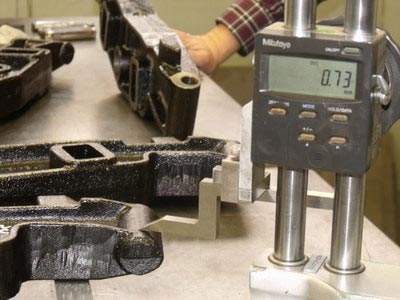
Manufacturing process of 4340 steel casting
- Furnace charging
- Melting
- Refining
- De-slagging
- Tapping (or tap out)
- Furnace turn-around
Refer cast steel valves uses and temperature limit
Cast steel valves temperature range
| Temperature range | -29°C to 425°C |
|---|
Difference between Wrought Iron and Steel
| Characteristics | Wrought Iron | Steel |
|---|---|---|
| Carbon content | 0.08% | 4% |
| Tensile Strength | Very good tensile strength | Greater tensile strength |
| Workmanship | Requires less workmanship. | Requires more craftsmanship than wrought iron |
Surface finish of Cast iron parts
- Shot Blasting
- Painting
- Powder Coating
- Electroplating
Natural Gas Purification Heat Transfer Fluid
propylene glycol heat transfer fluid,dowtherm sr1,duratherm heat transfer fluids,dynalene hc 50
Heat Transfer Fluids , https://www.armcoltherm.com
